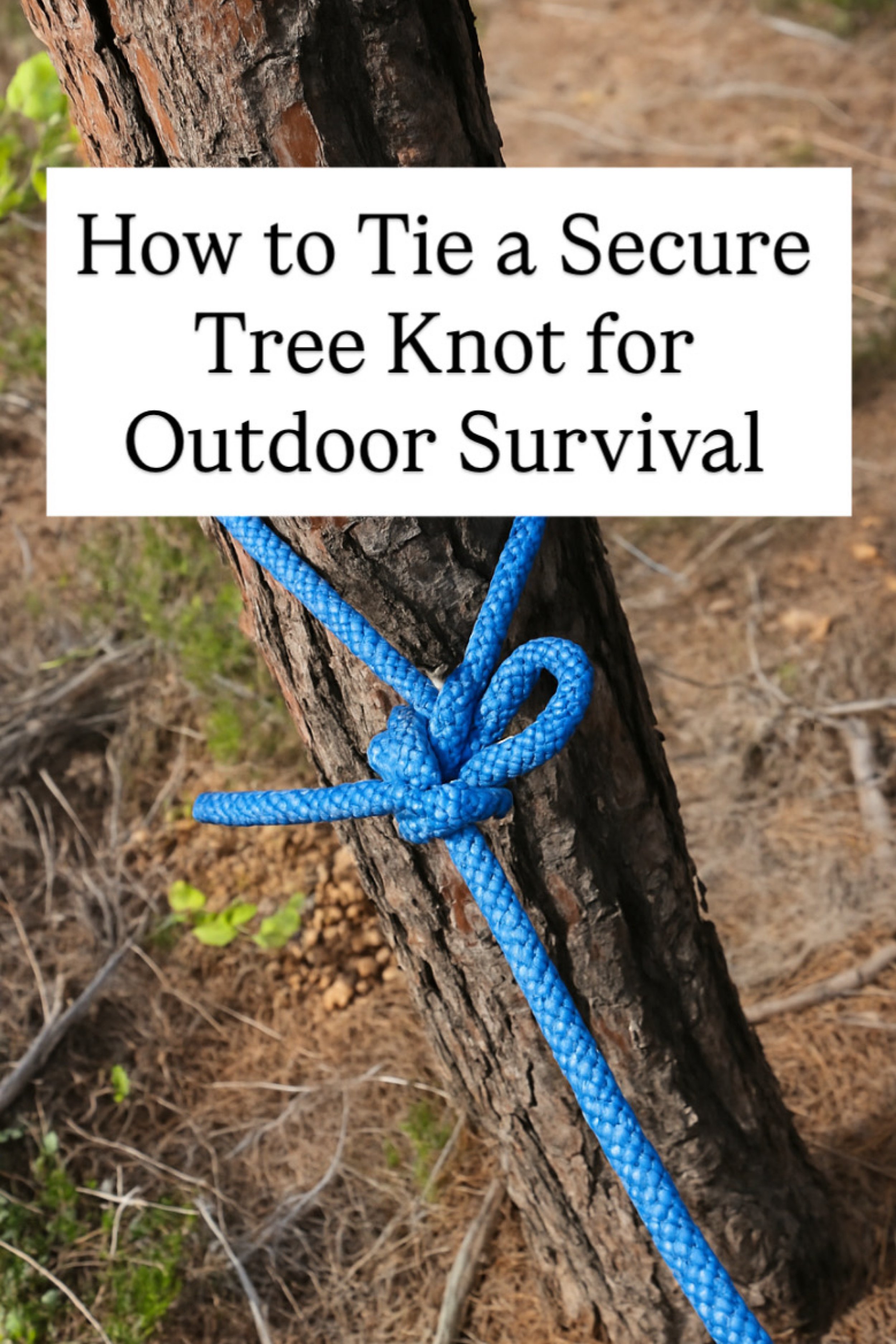How to Tie a Secure Tree Knot for Outdoor Survival
How to Tie a Secure Tree Knot for Outdoor Survival
When you are out in the wilderness, knowing how to secure a rope to a tree can mean the difference between a quick setup and a frustrating struggle. Whether you are hanging a tarp for shelter, creating an anchor point for climbing, or setting up a bear bag, mastering a reliable tree knot is an essential survival skill. The reel you saw demonstrates one of the most practical knots for this purpose: a round turn with a slip knot finish. It is strong, quick to tie, and easy to release.
Step-by-Step Tutorial
Step 1: Wrap the Rope Around the Tree
- Take the working end of your rope and wrap it once around a sturdy tree trunk.
- Keep both strands in your hands so you can control tension.
- Choose a tree with thick bark, as smoother trees can cause slippage.
Step 2: Create the First Loop
- Cross the working end over the standing part of the rope, forming a loop.
- This sets the foundation for locking the rope into place.
Step 3: Form a Bow-Like Twist
- Pull the working end through the loop you created, almost like you are tying the start of a shoelace.
- Keep tension snug but do not fully tighten yet.
Step 4: Secure the Knot
- Thread the end back under and through, tightening down firmly.
- This creates a reliable “lock” that prevents slipping under tension.
Step 5: Tighten and Test
- Pull the rope in the direction of load to seat the knot.
- Tug firmly to test stability before putting weight on it.
- The beauty of this knot is that it holds strong under tension but can be released quickly by pulling the free end.
Why This Knot Works
- Friction lock: The rope wraps around the tree, distributing force and preventing damage to the rope.
- Quick release: A simple pull undoes the knot, saving time in camp or survival scenarios.
- Versatility: Works for tarps, hammocks, guy lines, and emergency shelters.
Pro Tips
- Always use a rope appropriate for your activity. Thicker climbing ropes provide more grip, while paracord is lightweight but may slip on smooth bark.
- Place a piece of cloth, bark, or padding between rope and tree if you plan to keep it tied long term—this protects both rope and tree.
- Practice tying this knot until you can do it in low-light conditions, since emergencies rarely happen in perfect daylight.
Shop the Idea
Here are some essentials to help you practice and use this knot effectively:
Style it With
Level up your survival setup with these extras:
- Survival Bracelet with Firestarter
- Tactical Watch
- Compact Camping Hammock
- Multitool for Outdoors
- Headlamp for Night Camps
💡 Pro Tip: Why These Are Amazon Search Links (and Why “Add to Cart” Really Helps)
You might notice that every “Shop the Look” section uses Amazon search result links rather than one specific product. That’s not a glitch—it’s a strategy.
Items in fashion, beauty, and home sell out fast. Colors change. Styles get discontinued. Linking to a single item might leave you staring at a “Currently Unavailable” page—and nobody wants that.
With search result links, you’ll get:
• A fresh rotation of similar, in-stock finds
• Options that match your budget, size, and style
• Fewer dead ends and more discoveries
✨ Here’s how you can support this blog with zero extra cost:
If something speaks to you—even if you're still deciding—add it to your cart while you’re browsing. Amazon only credits creators like me if the item is added to your cart during that first visit.
It doesn’t cost you anything extra, but it makes a big difference in helping me keep this blog alive, ad-free, and full of hand-picked inspiration for your next obsession.
Thank you for being here. Thank you for shopping with intention. 💛
Final Thoughts
Learning to tie knots is like learning a language of the outdoors. This tree knot is not just useful—it is empowering. With a few quick motions, you secure safety, shelter, and peace of mind. Next time you head outdoors, bring your rope, pick a tree, and practice. The forest will always reward the prepared.





